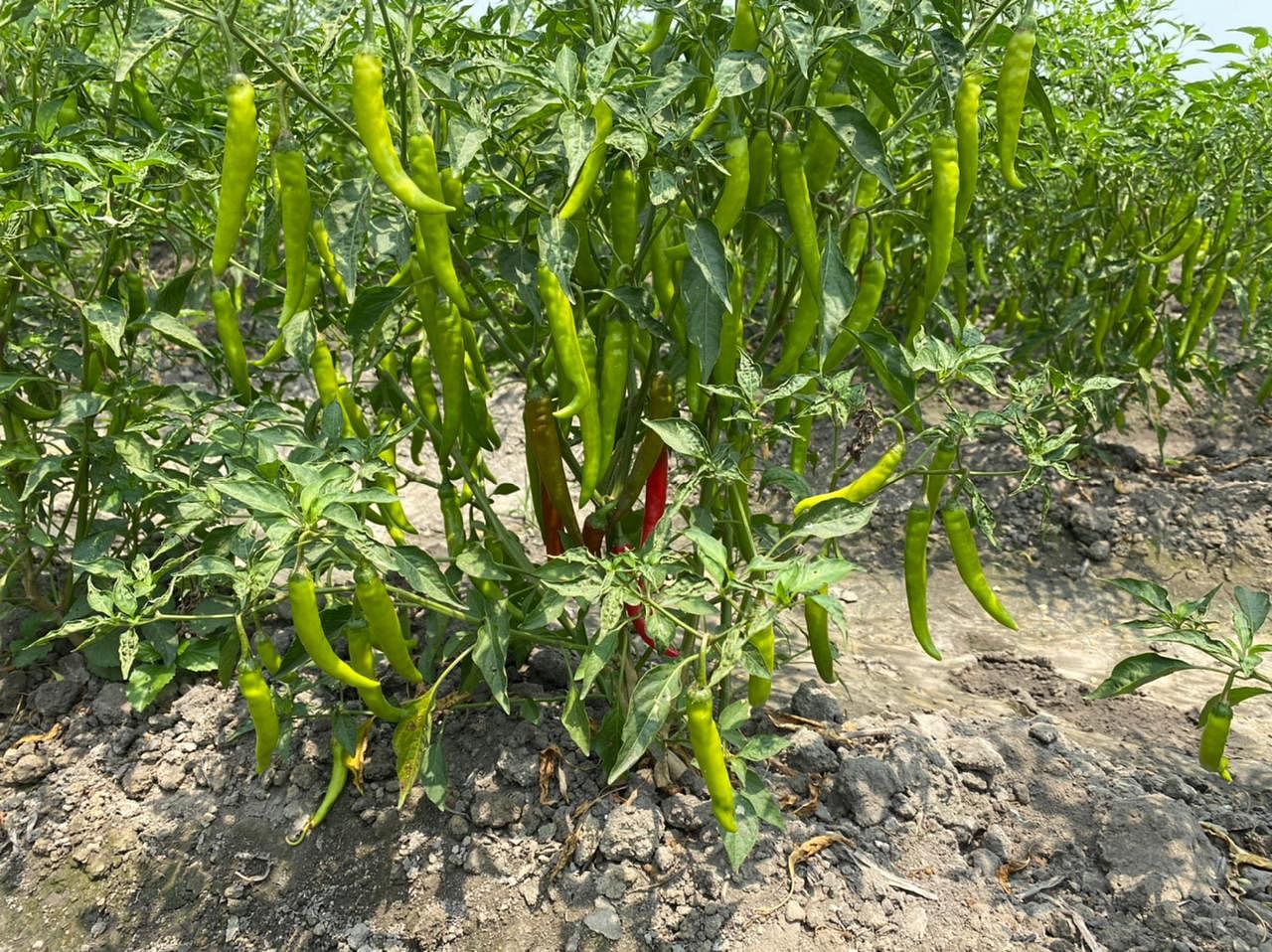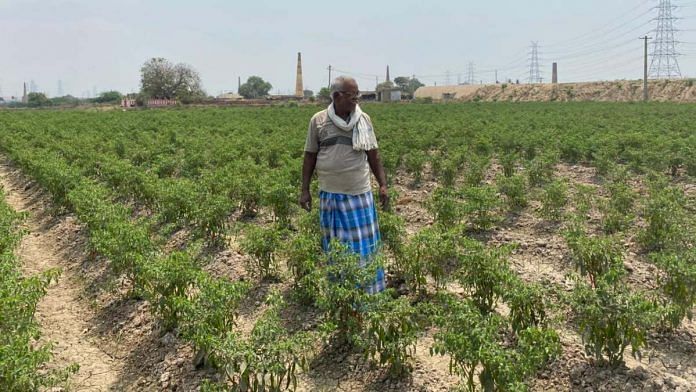Thiruvallur: G. Murugan’s farm in Neyveli village is a carpet of green, rustling in the wind with water-filled paddy crop. But one acre in this farmland is a blazing spot of blood red from chilli crop. Murugan is part of a group of 400 paddy farmers who have signed up for what is being called Tamil Nadu’s first step towards a “Red Revolution”, something that Punjab’s Green Revolution farmers can draw lessons from.
Coaxing farmers away from water-guzzling paddy towards cash crops like chilli has been the work of a company called Aachi Masala, which has also guaranteed to buy the harvest at market price and assured a minimum rate as well.
“Convincing the farmers was no joke,” said A.D. Padmasingh Isaac, Managing Director of Aachi Masala.
This is the next generation of agricultural innovation in the state, said Isaac. His company conducted over 200 meetings with farmers across villages in Thiruvallur. A first-generation entrepreneur, Issac wants the Red Revolution to be an education model to be spread across the state, where pesticide-free crops are grown.
Aachi Masala teamed up with a Chennai-based group called Nallakeerai devoted to natural farming practices. The team visited Guntur in Andhra Pradesh to study how they grew chillies. Thiruvallur has soil conditions similar to Andhra.
Mohan, the project head from Nallakeerai, explained that earlier the project was only called “Red” but it was “not catchy enough”.
“We added ‘Revolution’ in it, to catch up with the green and white revolution,” he said.
The first harvest will happen at the end of April. The chilli crop was planted soon after Pongal on 21 January.
“It is a difficult crop, but worth it. Aachi Masala is giving us a minimum price that is a lot more than what we get for rice. I am excited about this time’s harvest,” said Murugan.
Growing chillies may be more expensive, and require more labour, but Murugan is also saving more ground water.
Also Read: Why Haryana’s plan to move farmers away from paddy is floundering
Idea to start the ‘Red Revolution’
Isaac said the idea to naturally cultivate chilli came to his mind almost five years ago when he saw the huge amount of fertilisers and pesticides farmers were using.
“I not only wanted to educate them about natural farming practices but also wanted to give back to the farming community by offering the right price for crops,” he added.
He caught hold of R. Jagannath, a local farmer who started Nallakeerai in 2011, and discussed his vision. There was no looking back from there.
An employee of Aachi Masala said the motto for Isaac was “food is medicine”. Perhaps that is why Isaac chose Nallakeerai, whose website describes it as “a movement that brings us closer towards the Traditional Cropping Culture”.
Nallakeerai has tied up with the Institute of Sustainable Development in coordination with Aachi and is already working with approximately 400 farmers across 330 acres of land.
Also Read: Save Punjab from desertification, move paddy-wheat to UP, Bihar, Bengal — agronomist SS Johl
How it works
Despite the additional cost of nearly Rs 30,000 (for crop on one acre) for growing chilli compared to paddy, the Red Revolution benefits farmers as Aachi Masala has promised to purchase crops at market rate, and also given them a minimum guarantee price of Rs 80 per kg.
If the market price of chilli exceeds the minimum price, then that is the price that will be given to the farmers. However, if the market price falls below the minimum price, then farmers will take home the minimum guarantee price of Rs 80/per kg.

However, Shekhar, a farmer in Neyveli village, said it is not that simple.
“Weeding is more tedious, chilli needs to be weeded out systematically. Natural farming is more intensive and this requires more labour,” he added.
Sampoorna, a farm labourer at Thirukandalam in Thiruvallur, said her back and her feet were burning from all the weeding she had to do for the chilli crop. “I can’t even sit down. At least when I grew lentils, I could sit,” she said.
According to Shekhar, roughly 20 people are required to grow one acre of chilli, as compared to 10 for paddy.
Although labour is an issue, the team left no stone unturned to ensure chilli would be a successful crop in this area.
Mohan said chilli is a lot more profitable. For paddy, farmers earn approximately Rs 7,500 to Rs 10,000/acre per harvest (in profit), which leaves them with only Rs 2,000 per month for the four months until the next crop is harvested.
For chilli, farmers could earn a profit of at least Rs 60,000 on each acre of crop, he said. Each chilli crop takes four to five months to grow.
Vision going forward
Moving forward, Aachi Masala and Nallakeerai want to make labour less intensive and expand to 1,000 farmers over 1,000 acres.
Besides chilli, Isaac said he also wanted to grow coriander and turmeric organically and export all these blended spices to the 61 countries he was supplying to.
Edited by Sunanda Ranjan
Also Read: ‘He was a bus conductor too’ — TN ‘treeman’ praised on Mann ki Baat wants Rajini as forest ally




Need to connect to them
May I get that farmer number if you have please send i will join hands with them
A good move by both Mr Jannathan and mr Issac. The success will change the Agri face in Tamilnadu. Chilli is not an easy crop. We wish them all success. Kovilpatti and Sankarankoil are rich in Chilli.
Really good. More labour intensive suits India, a big country.
that is ofcourse assuming that punjab farmers are willing to learn and implement. why would they when agitating seems to be more profitable venture.
A good article. If only farmer’s of other states could be educated they could reap the benefits of using different crops, vegetables and fruits rather than that of staple paddy, cereals etc.